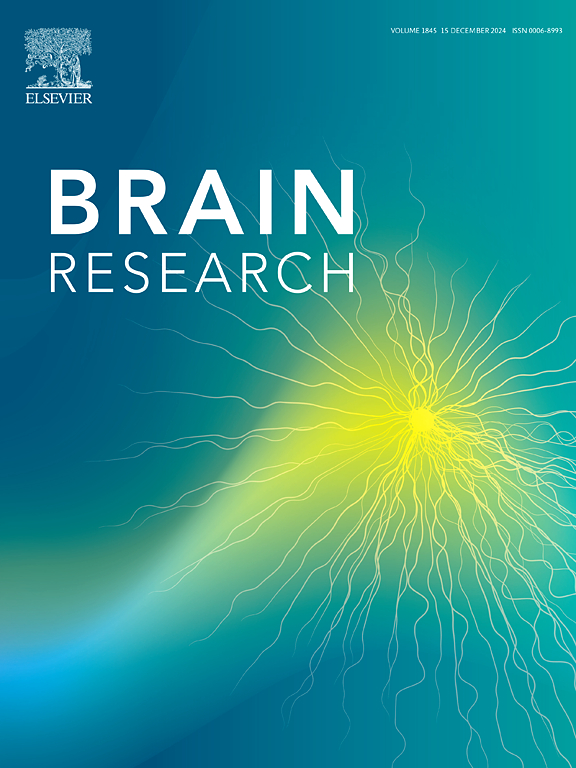依恋伴侣之间的社会互动增加了大脑间的可塑性。
IF 2.6
4区 医学
Q3 NEUROSCIENCES
引用次数: 0
摘要
互动伙伴之间的脑间同步是社会脑功能的一个重要特征,但神经协调是否在即时社交时刻之后持续存在尚不清楚。利用超扫描脑电图,我们研究了母亲与青少年短暂的面对面互动是否会引起脑间同步的持续变化。我们测量了110名母亲和青少年(55对二人组)在自然的、积极的面对面互动前后的共同静息状态记录中额颞叶网络的神经同步性。我们发现,在社会互动后,额颞叶网络的脑间同步增强,表明积极的社会交流可以暂时改变神经同步模式。这种互动后的神经同步性的大小是由合作伙伴在互动过程中的行为同步性介导的。从互动前到互动后,催产素的增加预示着神经同步性的增加超过了行为同步性,表明脑间协调有一个独特的神经内分泌途径。结果表明,依恋伙伴之间的积极社会互动可以引起神经同步性的短期变化,这种变化持续到即时交换之后。我们的研究结果提示了依恋关系中重复的社会经历可能影响神经发育的潜在机制,并强调了在研究大脑发育的社会基础时考虑脑间动力学的必要性。本文章由计算机程序翻译,如有差异,请以英文原文为准。

Social interactions between attachment partners increase inter-brain plasticity
Inter-brain synchrony between interacting partners is an important feature of social brain function, but whether neural coordination persists beyond the immediate social moment is unknown. Using hyperscanning EEG, we investigated whether a brief mother-adolescent face-to-face interaction induces sustained changes in inter-brain synchrony. We measured neural synchrony in the fronto-temporal network of 110 mothers and adolescents (55 dyads) during co-present resting-state recordings before and after a naturalistic, positively-valanced face-to-face interaction. We found enhanced inter-brain synchrony in the fronto-temporal network following the social interaction, indicating that positive social exchanges can temporarily modify patterns of neural synchrony. The magnitude of this post-interaction neural synchrony was mediated by the partners’ behavioral synchrony during the interaction. Oxytocin increase from pre- to post-interaction predicted the increase in neural synchrony above and beyond behavioral synchrony, suggesting a distinct neuroendocrine path for inter-brain coordination. Results indicate that positive social interactions between attachment partners can induce short-term changes in neural synchrony that persist beyond the immediate exchange. Our findings suggest a potential mechanism by which repeated social experiences within attachment relationships may influence neural development and highlight the need to consider inter-brain dynamics in research on the social foundations of brain development.
求助全文
通过发布文献求助,成功后即可免费获取论文全文。
去求助
来源期刊

Brain Research
医学-神经科学
CiteScore
5.90
自引率
3.40%
发文量
268
审稿时长
47 days
期刊介绍:
An international multidisciplinary journal devoted to fundamental research in the brain sciences.
Brain Research publishes papers reporting interdisciplinary investigations of nervous system structure and function that are of general interest to the international community of neuroscientists. As is evident from the journals name, its scope is broad, ranging from cellular and molecular studies through systems neuroscience, cognition and disease. Invited reviews are also published; suggestions for and inquiries about potential reviews are welcomed.
With the appearance of the final issue of the 2011 subscription, Vol. 67/1-2 (24 June 2011), Brain Research Reviews has ceased publication as a distinct journal separate from Brain Research. Review articles accepted for Brain Research are now published in that journal.
 求助内容:
求助内容: 应助结果提醒方式:
应助结果提醒方式:


